MEETING TIME
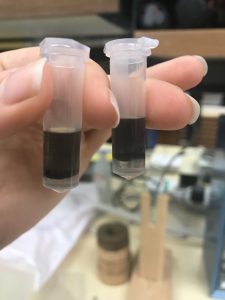
We have weekly meetings to share what we have accomplished and to help give feedback to the other people in our lab. I was able to say “I learned what nanotubes are and I started working on the aqueous two phase extraction except, I have not had success.” The follow up questions helped me to realize that the polymers that I am using come in different molecular weights. These molecular weights indicate how large the polymer is. The larger the molecular weight the bigger the polymer is and the harder for the single walled carbon nanotubes (SWCNTs) to move in that solution. I think of it like trying to swim through water (low molecular weight) compared to trying to swim through through honey (big molecular weight).
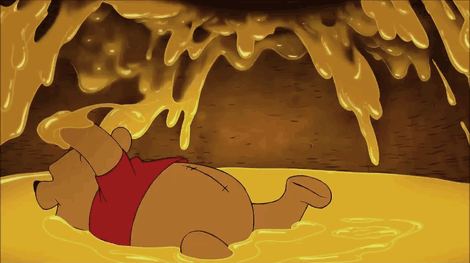
Aqueous two phase extraction (ATPE) relies on the movement of SWCNT between the top phase (layer) and bottom phase (layer) to create a separation of SWCNTs. My large molecular weight of the bottom phase was preventing any SWCNT from moving into the bottom phase to separate from the top phase. This means I was not extracting a specific group of SWCNTs.
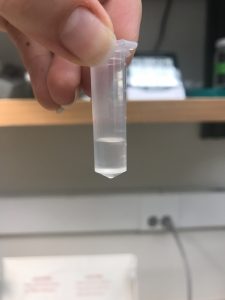
TIME TO WORK
I decided to run the same protocol but with the molecular weight of the polymers indicated in various articles. I also created a more concentrated solution of SWCNTs in a 2% sodium cholate solution.

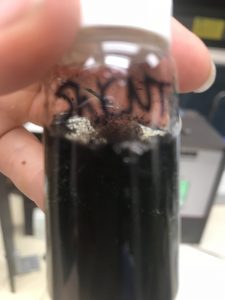
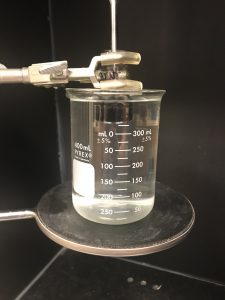
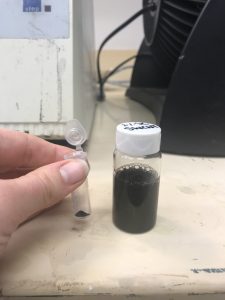
Much to the relief of the undergraduate whose protocol I have been using. Success! A “blue” top phase and “red/brown” bottom phase.
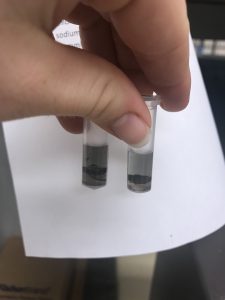
Riding my high horse I showed my sample to my mentor. She reminded me that just because the appearance seems right doesn’t mean that I have the correct result. Time to go get some data using the spectroscopy machine. Also, how cool is it that the professor in charge of the lab works on creating this machine! I analyzed my data with the help of the undergraduate student in the lab. It looks like I am doing an “okay” job of separating the semi-metallic SWCNT but not a great job of separating the metallic SWCNT.
Time to problem solve: I was probably extracting the bottom phase incorrectly getting part of the interphase with the bottom phase, my TCCA might have decomposed or be the wrong concentration necessary, the pH could have changed, or the solutions were not properly “mixed” before using the centrifuge.
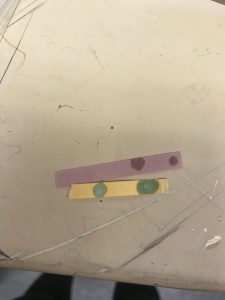
After you problem solve you jump back in and try it again. It is important to have multiple successful trials before making conclusions and moving on.
HIGHLIGHTS
- I created a carbon nanotube dispersion on my own
- Independently I was able to correctly identify the solute and the molecular weight to create stock solutions
- I used articles to inform decisions
- I asked questions to clarify how to read the spectroscopy data
- I had some success and failures using the EXACT same protocol

Hey Anna!
I love the way you did your blog. The descriptions for the pictures are a great idea and the GIFs are a nice touch. This seems like a difficult extraction you are doing so congrats on your success! Carbon nanotubes are my favorite and I am slightly jealous of you!
-Taylor
I love your graphics to express what’s happening to you in the lab! So funny and relatable. But how cool that you successfully created a carbon nanotube dispersion on your own, among other things. It sounds like you are making progress for sure, even if things aren’t always going right.